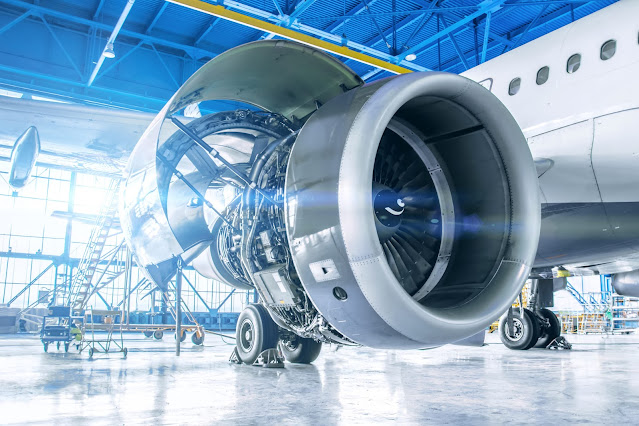Aerospace Parts Manufacturing Market: An Overview
 |
| Aerospace Parts Manufacturing Market |
The Aerospace Parts Manufacturing Market encompasses the
production and supply of components and parts used in the aerospace industry.
These parts include aircraft engines, structural components, avionics systems,
and other critical elements necessary for the construction and maintenance of
aircraft and spacecraft. The market plays a vital role in supporting the
aviation and aerospace sectors by providing high-quality, reliable, and
technologically advanced components.
The Aerospace Parts Manufacturing Market is estimated to be
valued at USD 918.7 Bn in 2024 and
is expected to reach USD 1419.2 Bn
in 2031, growing at a compound annual growth rate (CAGR) of 6.4% from 2024 to 2031.
Key Players
in the Aerospace Parts Manufacturing Market
Several key players dominate the Aerospace
Parts Manufacturing Market, including renowned companies such as Boeing, Airbus,
Lockheed Martin, General Electric Aviation, and United Technologies Corporation
(UTC). These companies specialize in manufacturing a wide range of aerospace
components, from engines and landing gear to navigation systems and composite
materials. Their expertise, technological capabilities, and global presence
significantly influence the dynamics of the market.
Market
Drivers for Aerospace Parts Manufacturing
The Aerospace Parts Manufacturing Market is driven by several
factors that contribute to its growth and development. Key drivers include:
Increasing
Demand for Commercial Aircraft: The rising global demand for air
travel, particularly in emerging economies, fuels the need for new aircraft
production, thereby driving the demand for aerospace parts.
Technological
Advancements: Innovations in aerospace engineering, materials science,
and manufacturing processes lead to the development of lighter, more
fuel-efficient, and durable components, driving market growth.
Defense and
Military Spending: Government investments in defense and military
aircraft programs drive demand for advanced aerospace components and
technologies.
Globalization
and Supply Chain Optimization: Aerospace manufacturers focus on
optimizing supply chains, sourcing components globally, and adopting lean
manufacturing practices to enhance efficiency and competitiveness.
PEST
Analysis of Aerospace Parts Manufacturing Market
Political
Factors: Government policies, regulations, and trade agreements
impact the Aerospace Parts Manufacturing Market. Political stability, defense
budgets, and export-import regulations influence market dynamics.
Economic
Factors: Economic conditions, currency fluctuations, and global
trade impact the affordability and demand for aerospace parts. Economic growth,
particularly in emerging markets, drives aviation expansion and component
procurement.
Social
Factors: Trends in air travel, passenger preferences, environmental
awareness, and workforce demographics influence market trends and product
innovation.
Technological
Factors: Rapid advancements in technology, such as additive
manufacturing, automation, and digitalization, transform aerospace
manufacturing processes and product offerings.
SWOT
Analysis of Aerospace Parts Manufacturing Market
Strengths: Strong
technological capabilities, established market players, global supply chains,
and ongoing innovations in materials and processes are key strengths of the
Aerospace Parts Manufacturing Market.
Weaknesses:
Challenges may include regulatory compliance, geopolitical risks, supply chain
disruptions, and the need for continuous investment in research and
development.
Opportunities:
Opportunities lie in the growing demand for commercial and military aircraft,
advancements in sustainable aviation technologies, and partnerships for joint
ventures and collaborations.
Threats: Threats
include competitive pressures, market consolidation, geopolitical tensions
affecting supply chains, and economic downturns impacting aviation demand.
The Aerospace Parts Manufacturing Market is a dynamic and
strategic sector within the aerospace industry. Key players, market drivers,
PEST analysis factors, and SWOT insights provide a comprehensive understanding
of the market's landscape, opportunities, and challenges, guiding stakeholders
in making informed decisions and driving sustainable growth in the aerospace
parts manufacturing sector.



Comments
Post a Comment